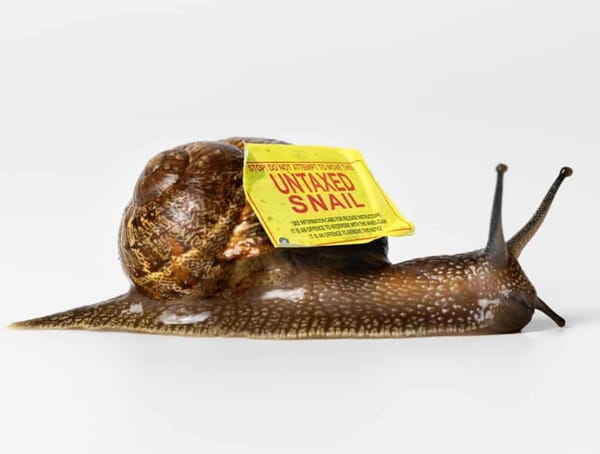Unassuming married couple turn out to be Russian spies

From the Wall Street Journal: "The young Argentine couple in the pastel-colored house lived a seemingly ordinary suburban life, driving around this sleepy European capital in a white Kia Ceed sedan, always paying their taxes on time and never so much as getting a parking ticket. Maria Rosa Mayer Muños ran an online art gallery, telling acquaintances she’d left Argentina after being robbed in Buenos Aires by an armed gang at a red light. Her husband, Ludwig Gisch, ran an IT startup. Described by neighbors in their middle-class district of Črnuče as “normal” and “quiet,” the husband and wife appeared to be global citizens: switching from English and German with friends to accentless Spanish with their son and daughter, who attended the British International School. Yet almost everything about the family from number 35 Primožičeva street was a carefully constructed lie, according to intelligence officials."
She was pronounced dead then they found her gasping for air in a body bag

From Popular Mechanics: "About two hours after the body of 74-year-old Constance Glanz arrived at the funeral home outside of Lincoln, Nebraska, earlier this month, an employee there noticed something strange. Glanz, who had been pronounced dead at a nearby nursing home, was breathing. After she was transported to a local hospital, Glanz survived for a few more hours. She was later declared dead for a second time. In 2023, a 76-year-old Ecuadorian woman was declared dead after a suspected stroke. Five hours later, she was found alive after her coffin was opened to change her clothing. Months earlier, an Iowa woman was taken to a funeral home where workers found her gasping for air in a body bag. In 2018, a South African woman who was initially declared dead was discovered alive in a mortuary refrigerator."
Pneumatic tubes are making a comeback, mostly in hospitals

From MIT: "Pneumatic tube technology involves moving a cylindrical carrier or capsule through a series of tubes with the aid of a blower that pushes or pulls it into motion. For a while, the United States took up the systems with gusto. By 1912, tubes were used in retail, banks, insurance offices, courtrooms, libraries, hotels, and industrial plants, and the postal service in a number of metropolitan cities such as Boston, Philadelphia, Chicago, and New York also used tubes to deliver the mail. But by the mid to late 20th century, use of the technology had largely fallen by the wayside. It had become cheaper to transport mail by truck than by tube, and as transactions moved to credit cards, there was less demand to make change for cash payments. Pneumatic tube technology became virtually obsolete. Except in hospitals."
(Editor's note: If you like this newsletter, please share it with someone else. And if you really like it, perhaps you could subscribe, or contribute something via my Patreon. Thanks for being a reader!)
Scientists search for a female partner for the world’s loneliest plant

From The Conversation: "Encephalartos woodii is a plant from South Africa, a member of the cycad family, heavy plants with thick trunks and large stiff leaves that form a majestic crown. It has outlasted dinosaurs and multiple mass extinctions, but today it is one of the most threatened species on the planet. The only known wild E. Woodii was discovered in 1895 by the botanist John Medley Wood while he was on a botanical expedition in the Ngoye Forest in South Africa. The Forestry Department removed it from the wild in 1916 for safekeeping in a protective enclosure in South Africa, making it extinct in the wild. The plant has since been propagated worldwide. However, the E. woodii faces an existential crisis. All the plants are clones from the Ngoye specimen. They are all males, and without a female, natural reproduction is impossible."
Ancient DNA reveals a little-known fact about the victims of Mayan sacrifice

From CNN: "The ancient Maya city of Chichén Itzá in Mexico’s Yucatán Peninsula has long been associated with human sacrifice, with hundreds of bones unearthed from temples, a sacred sinkhole and other underground caverns. A long-held misconception is that the victims were often young and female — an impression that has stuck in the contemporary imagination and become hard to dislodge even as more recent research has suggested that both men and women were among those sacrificed. A study in the journal Nature adds unexpected detail to that more complex picture: the new analysis, based on ancient DNA from the remains of 64 people who were ritually sacrificed found the victims were all young boys, many of whom were closely related."
Expensive watches are often used by intelligence agents to entice a foreign spy

From Watches of Espionage: "The job of a CIA Case Officer (C/O), or Operations Officer, is to recruit spies and steal secrets. The core competency of a C/O is building relationships with individuals (targets) and ultimately recruiting them to provide Foreign Intelligence on their host government/organization in return for financial remuneration. The trade is not for the faint-hearted, one prized quality of a C/O is the ability to manipulate an individual to further the National Security interests of the United States. Timepieces can play a role in the agent recruitment cycle—the transition of an individual from a target to a recruited asset (aka spy). Espionage is a human business and watches are transferable stores of value that have personal meaning—these traits make them effective tools of intelligence tradecraft."
This female magician is a quick change artist
this was actually amazing pic.twitter.com/hdkXRpMzio
— non aesthetic things (@PicturesFoIder) June 17, 2024
Acknowledgements: I find a lot of these links myself, but I also get some from other newsletters that I rely on as "serendipity engines," such as The Morning News from Rosecrans Baldwin and Andrew Womack, Jodi Ettenberg's Curious About Everything, Dan Lewis's Now I Know, Robert Cottrell and Caroline Crampton's The Browser, Clive Thompson's Linkfest, Noah Brier and Colin Nagy's Why Is This Interesting, Maria Popova's The Marginalian, Sheehan Quirke AKA The Cultural Tutor, the Smithsonian magazine, and JSTOR Daily. If you come across something interesting that you think should be included here, please feel free to email me at mathew @ mathewingram dot com



